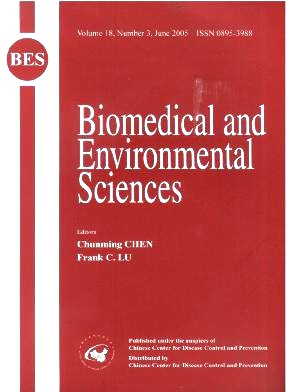Influence of Isoflavones on Cadmium-induced Adverse Effects in Vascular Endothelial Cells (ECV 304)
-
Key words:
- Isoflavone /
- Cadmium /
- Cytotoxicity /
- Metallothionein /
- Vascular endothelial cells
Abstract: Objective To study the possible intervention of isoflavones in cytotoxicity induced by cadmium in vascular endothelial cells. Methods An ECV 304 cell line derived from human umbilical vein endothelial cells was adopted. Genistein / daidzein was added prior to or simultaneously with CdCl2, cell viability was determined by MTT assay, and metallothionein mRNA expression was monitored by RT-PCR method. Results Cell viability was higher in isoflavone and CdCl2 co-treated groups than that in CdCl2 treated group, with CdCl2 concentration at 10, 20, 40, and 80 μmol/L, respectively. However this increase was not observed in the group treated with CdCl2 at a concentration of 60 μmol/L. Isoflavones (10-10 mol/L to 10-5 mol/L) were added 24 h before cells were challenged with 80 μmol/L CdCl2 for 24 h or simultaneously with 80 μmol/L CdCl2. Genistein increased cell viability only at 10-5 mol/L, while daidzein caused a dose-dependent increase from 10-10 mol/L to 10-5 mol/L in co-treatment with CdCl2. In pre-treatment, genistein (10-7 to 10-5 mol/L) increased cell viability whereas only 10-5 mol/L of daidzein exerted protection. Apparent protection could be found when the cells were pre-treated with 10-5 mol/L isoflavones for over 12 h, whereas 24 h incubation was required in such a co-treatment, with the exception of daidzein that had a significant protection in only 3 h. Isoflavones (10-6 mol/L) incubated for 3 h to 24 h, increased MT IIA and MT IF mRNA expression, but the induction could not last for more than 24 h. Co-treatment with isoflavones could induce an additional induction of MT IIA mRNA expression in cells exposed to cadmium. However, the additional induction of MT IIA and MT IF mRNA was not seen when pre-treatment was carried out with isoflavones, with the exception of an increase in MT IIA mRNA expression in the daidzein pre-treated group. Conclusion Genistein/daidzein could reverse the cytotoxicity of cadmium either in pre-treatment or in co-treatment. The protection is the strongest in 10-5 mol/L of isoflavones with a dose-dependent pattern. There are differences between genistein and daidzein in their protective effects. Whether the protection of isoflavones is related to their capacity of inducing MT mRNA expression remains to be elucidated.
| Citation: | JUE CHEN, Tai-Yi JIN. Influence of Isoflavones on Cadmium-induced Adverse Effects in Vascular Endothelial Cells (ECV 304)[J]. Biomedical and Environmental Sciences, 2005, 18(3): 146-152. |







 Quick Links
Quick Links
 DownLoad:
DownLoad: